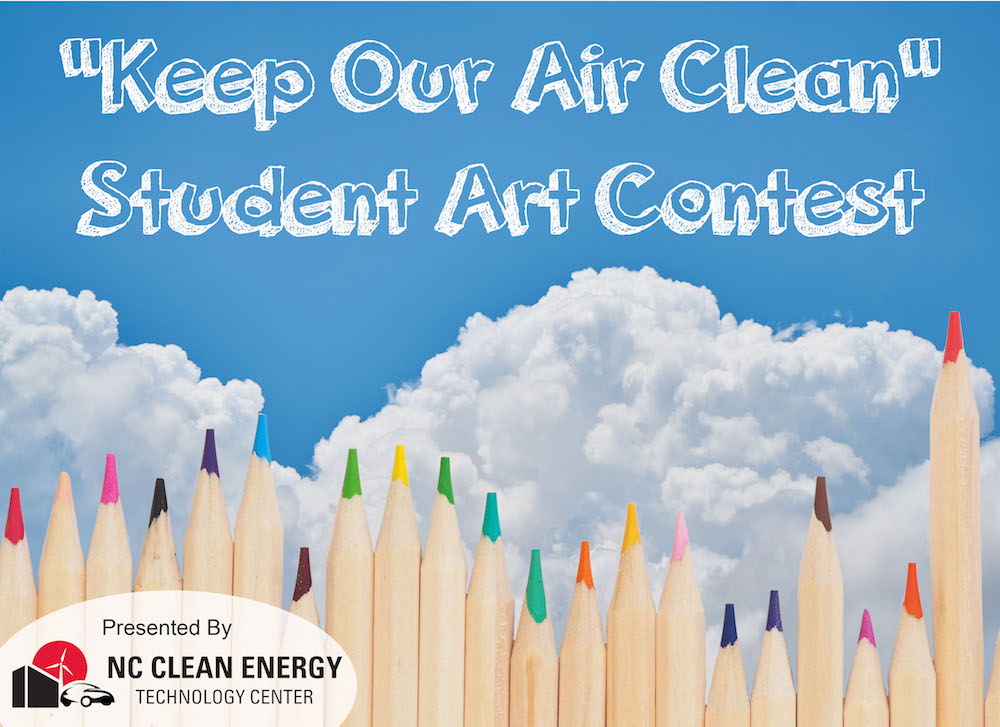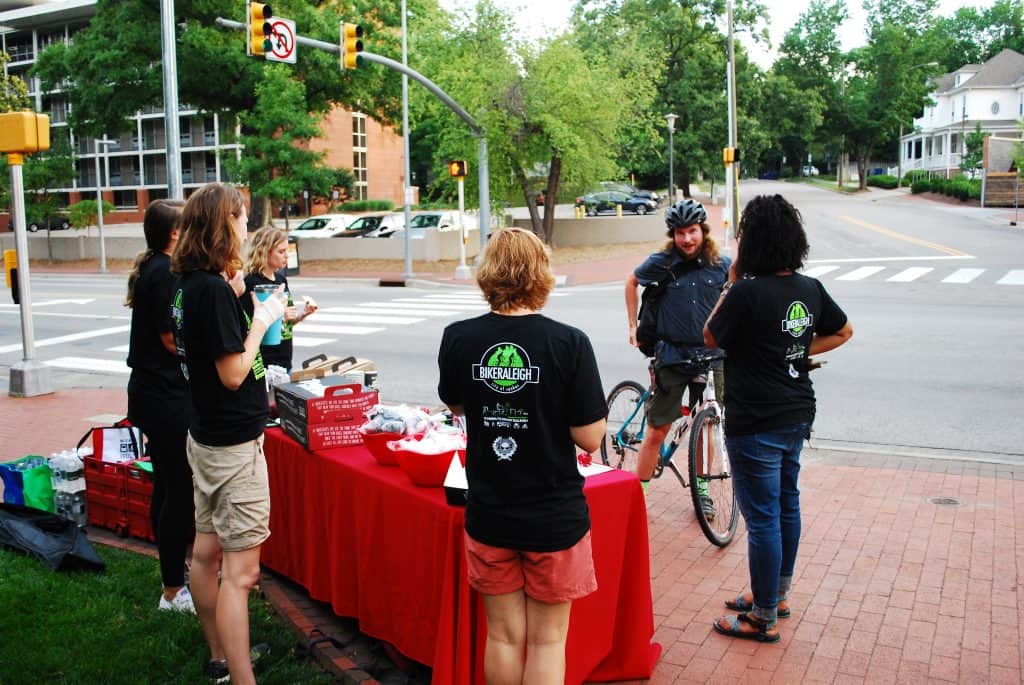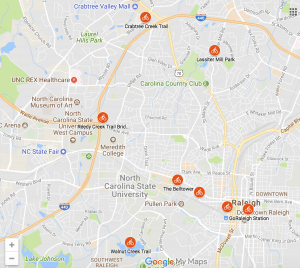Due to interruptions caused by COVID-19, we have extended the submission deadline to around the end of the 2020 school year, Friday, June 12, to give students more time to submit their art.
Unfortunately, as of right now due to recent funding changes, Student Art Contest winners’ art will no longer be able to be featured on billboards this year. Winners in each category will still be featured in a blog post and receive a special certificate for their achievement. We apologize for the changes and any inconvenience this may have caused.
The North Carolina Clean Energy Technology Center (NCCETC) has officially launched the 3rd Annual “Keep Our Air Clean” Student Art Contest, where students in North Carolina from kindergarten through high school can submit their artwork to show how to keep the air clean. Winners will be featured in a blog post and receive special certificates.
Artwork should focus on actions that people can take to reduce air pollution from vehicles and help keep our air clean. Examples include walking, biking, using public transportation, carpooling, using electric vehicles or biofuels, and more. Please make artwork family-friendly, non-partisan and non-copyrighted. You can learn about the alternatives at cleantransportation.org or fuelwhatmatters.org.
The winner will be chosen based on:
• Relevance and appropriateness of the message
• Visual design
• Public votes on our Facebook account (link to vote to come once all submissions are received)
See last year’s winners here.
Art submissions will be accepted through Friday, June 12. Please submit here or by emailing Nicole Wilson at nadeck@ncsu.edu. Public voting will begin on Monday, June 15 and last through Sunday, June 21 – stay tuned for a link to vote once all submissions are received!
Artists who are over 18 or parents/legal guardians submitting on behalf of their children can submit artwork by directly emailing Nicole Wilson at nadeck@ncsu.edu. You are agreeing to the legal terms below. Teachers submitting artwork on behalf of their students must return a signed permission form.
Winners will be announced in July. Stay tuned on nccleantech.ncsu.edu and FuelWhatMatters.org!
For more information or any questions, email Nicole Wilson at nadeck@ncsu.edu.
Legal Terms
By submitting this photograph, image, graphic, or video (collectively the “work”) you hereby agree to the following:
• You certify and warrant that you are the legal guardian of the minor who is submitting the artwork or are the artist and are legally an adult.
• You certify and warrant that the work is your work or your child’s own original creative work and does not violate or infringe the copyright or other proprietary or intellectual property rights of others.
• You retain all copyright and equivalent rights but grant permission for NC State to use, reproduce, distribute, and/or release the work to the public in any manner and in any medium without payment of any fee, and in perpetuity.
• North Carolina State University reserves the right to use contestants’ names and works for educational publicity and/or promotional purposes, including website or exhibition of winning entries. You understand that the works will be shared with reporters covering these awards and for promotion of the competition itself. You hereby give North Carolina State University nonexclusive rights to use yours or your child’s name, likenesses, quotes and submissions for educational publicity and/or promotional purposes. This includes but is not limited to website display, print materials and exhibits.
• You hereby agree to indemnify NC State, its trustees, officers, agents, and employees, from any and all claims, demands, and liabilities (including attorneys’ fees) incurred as a result of a final judgment or settlement or any claim or legal proceeding arising out of or resulting from a breach or claimed breach of the foregoing representations and warranties.




